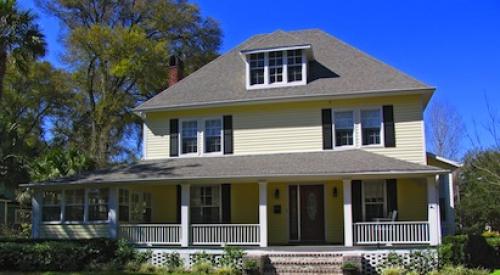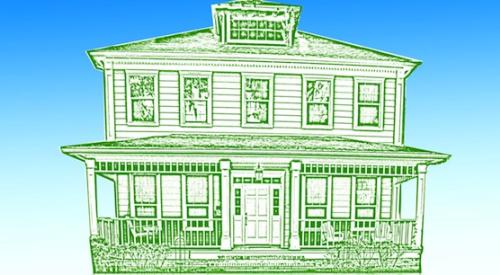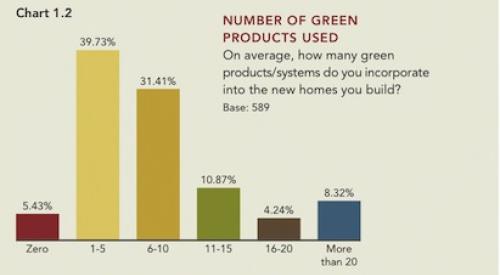This month, we feature two markets that have strong job growth and excellent affordability: Austin and Salt Lake. Both markets are experiencing job growth in almost every sector of the economy (see chart below) and both markets have experienced very little price appreciation this decade.
Giant Market: Austin  |
In 2000, as Austin was completing the infrastructure necessary to open massive areas of land in the northeast for development, the technology downturn hit. The result was that from 2001 until 2003, Austin lost 20,000 jobs while builders completed more than 50,000 housing units. Certainly, the market suffered greatly during this time.
Job growth has returned, but price appreciation has been slow because there remains a hangover of foreclosure activity from the downturn. Home prices have risen only $20,000 in the last six years, while mortgage rates fell from 8.5 percent to 6.2 percent. Thus, Austin is one of the most affordable housing markets in the country.
We believe Austin has all that is needed for a bright future, including: 1) an excellent employment base of highly educated people (Dell Computers, University of Texas, etc.), 2) a 7- year-old, $581 million airport that has plenty of room for growth, 3) a great location in the center of the country, 4) fantastic infrastructure and 5) an outstanding climate.
Up and Coming Market: Salt Lake CitySalt Lake City is an anomaly. It is a market that frequently looks good on paper. Many have entered the market, only to exit it a few years later. Local builders and some large private builders, however, have had tremendous success in Salt Lake City.
This is a market where local knowledge appears to be a key advantage. Fractured land ownership, cost advantages based on a long history with the local subcontractors, and intimate knowledge of the consumers are just some of the reasons that the locals claim that outsiders have failed.
| Employment | Affordability | Permits | ||||||||||
| Short-Term Outlook/Grade | 1-Year Payroll Employment Growth | 1-Year Growth Rate | Unemployment Rate | Median Resale Home Price | Resale Housing Costs as % of Income* | Housing Cycle Barometer** | 12-Month Single-Family Permits | 1-Year Single-Family Growth | 12-Month Total Permits | Total Permits as % of Peak Permits | ||
| 1 | Atlanta | B | 42,800 | 1.87% | 4.9% | $163,456 | 27.0% | 5.3 | 60,952 | 5.6% | 72,223 | 96% |
| 2 | Phoenix | B+ | 83,200 | 4.81% | 3.8% | $260,000 | 40.1% | 6.3 | 53,964 | -6.3% | 62,375 | 95% |
| 3 | Houston | B | 42,500 | 1.84% | 5.3% | $146,500 | 25.0% | 3.2 | 51,134 | 7.8% | 62,217 | 95% |
| 4 | Riverside-SB | C | 21,600 | 1.84% | 4.3% | $374,000 | 66.0% | 7.6 | 45,792 | 5.8% | 51,295 | 89% |
| 5 | Dallas | B+ | 26,600 | 1.38% | 4.7% | $159,400 | 25.4% | 1.9 | 31,435 | 3.4% | 38,580 | 52% |
| 6 | Las Vegas | A+ | 59,200 | 7.04% | 3.5% | $300,000 | 49.9% | 5.5 | 30,358 | -4.5% | 38,534 | 94% |
| 7 | Chicago | C | 40,800 | 1.08% | 5.5% | $247,500 | 40.8% | 6.8 | 28,588 | 2.3% | 43,427 | 100% |
| 8 | Tampa | C+ | 32,400 | 2.50% | 2.9% | $189,500 | 36.8% | 6.3 | 27,420 | 19.2% | 33,994 | 90% |
| 9 | Orlando | B+ | 42,100 | 4.21% | 2.8% | $230,000 | 40.5% | 6.4 | 26,510 | -3.4% | 35,863 | 100% |
| 10 | Washington D.C. | C+ | 70,200 | 3.01% | 3.0% | $434,923 | 53.2% | 8.3 | 22,214 | -2.6% | 30,164 | 79% |
| 11 | Fort Myers | C+ | 8,600 | 4.08% | 2.3% | $205,996 | 36.5% | 6.9 | 22,211 | 46.0% | 29,330 | 100% |
| 12 | Charlotte | A | 25,100 | 3.17% | 4.6% | $155,500 | 25.4% | 1.2 | 19,348 | 10.0% | 22,146 | 97% |
| 13 | Jacksonville | B+ | 19,900 | 3.37% | 3.0% | $170,000 | 28.8% | 5.6 | 18,610 | 26.8% | 25,090 | 98% |
| 14 | Minneapolis | B+ | 23,300 | 1.32% | 3.7% | $242,500 | 31.6% | 6.1 | 17,972 | -11.3% | 22,787 | 81% |
| 15 | Fort Worth | B+ | 10,000 | 1.25% | 4.5% | $114,400 | 19.5% | 2.9 | 17,887 | 15.0% | 21,176 | 55% |
| 16 | Denver | B | 12,700 | 1.07% | 4.6% | $240,000 | 36.8% | 6.0 | 17,586 | 5.1% | 20,751 | 72% |
| 17 | Austin | B+ | 14,200 | 2.10% | 3.9% | $168,200 | 28.9% | 4.7 | 17,076 | -7.5% | 22,986 | 87% |
| 18 | Sacramento | B | 18,900 | 2.18% | 4.1% | $380,000 | 61.5% | 7.0 | 15,755 | -14.7% | 18,645 | 78% |
| 19 | San Antonio | B+ | 12,000 | 1.56% | 4.3% | $138,900 | 27.1% | 2.7 | 14,622 | 3.4% | 22,226 | 100% |
| 20 | Nashville | B | 10,000 | 1.37% | 4.0% | $145,000 | 26.0% | 4.7 | 14,063 | 6.3% | 16,779 | 91% |
| 21 | Raleigh | A+ | 15,700 | 3.50% | 3.6% | $171,500 | 26.1% | 0.3 | 13,946 | 15.4% | 14,571 | 91% |
| 21 | St. Louis | B | 6,200 | 0.46% | 4.9% | $149,000 | 27.9% | 5.5 | 13,250 | -4.7% | 15,392 | 84% |
| 23 | Portland | C | 26,500 | 2.75% | 5.1% | $245,500 | 43.9% | 8.8 | 12,728 | 11.5% | 17,175 | 87% |
| 24 | Indianapolis | C | -500 | -0.06% | 4.8% | $126,337 | 21.9% | 2.0 | 12,382 | -0.1% | 15,448 | 90% |
| 25 | Los Angeles | C | 49,500 | 1.23% | 5.1% | $518,000 | 90.8% | 8.8 | 12,235 | 0.8% | 24,978 | 36% |
| * Annual mortgage costs +1/7 of the down payment divided by income. **Proprietary affordability scale with 0 meaning most affordable time since 1983, 5 meaning median affordability and 10 meaning least affordable time. Sources: Bureau of Labor Statistics; Census Bureau through the month ending December 2005; John Burns Real Estate Consulting | ||||||||||||
| Author Information |
| John Burns helps with strategy and monitoring market conditions with many of the largest companies in the industry. He can be reached at jburns@realestateconsulting.com. |












